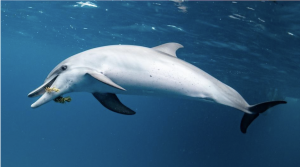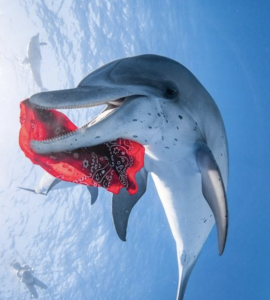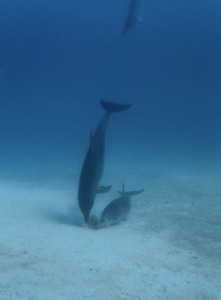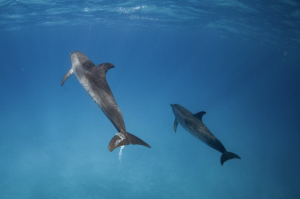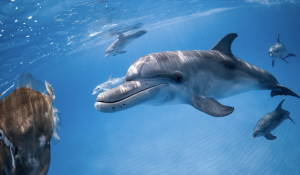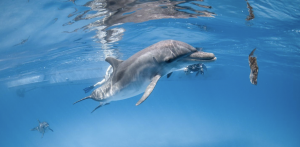Brittini A. Hill
Dolphins will play with just about anything they can find. You may have seen pictures of the spotted dolphins playing with sargassum, scarves, sea cucumbers, or even plastic. On our last trip to the Bahamas, we came across four dolphins playing with something we don’t see quite as often.
As we slid into the water and kicked towards the dolphins milling near the front of the boat, they appeared to be circling and playing with something in the water. Immediately, two filefish swam toward us with the dolphins close behind. The fish attempted to use us as shelter, darting from person to person, pressing their flat bodies against our arms or large cameras.
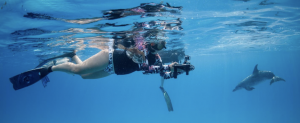
Photo Credit: WDP, Brittini Hill
Filefish
While there are over a hundred species of filefish in the Monicanthidae family, only a few inhabit Bahamian waters. The fish we encountered appeared to be orange-spotted filefish. Filefish are flat with a protruding snout and a sharp spine on their foreheads. They are found in shallow water around coral and rocky reefs. The young swim in the open ocean and are important prey items for tuna and billfishes, but the adults are rarely consumed. The dolphins do not eat filefish, but are seen playing with them from time to time. Like many other fish, filefish can lighten and darken the color of their skin. We observed these two changing colors, with white strips appearing and disappearing down the sides of their bodies.
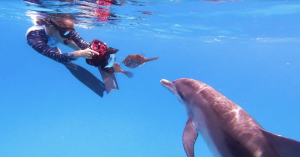
Photo Credit: WDP, Cassie Volker-Rusche
Dolphin Play
The three dolphins, Jammin, Zahara, and Lettice continued to pursue the filefish. They chased, dove, echolocated, and pushed the fish along with their rostrums. The dolphins made no attempts to eat the fish, but were intent on their game of chase. When the fish hid behind my camera for too long, Zahara blew a bubble of what seemed to be frustration that her toy was just out of reach.
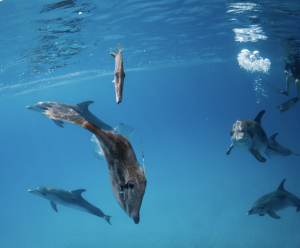
After Zahara blew a bubble, I decided to dive in an attempt to lose the filefish—to return the dolphins’ toy and prevent any further frustration. While play may be fun, it’s more than that. Just like with human children, play helps dolphins develop problem-solving and motor skills. It strengthens social bonds and can serve as practice for important behaviors like foraging, fighting, and mating.
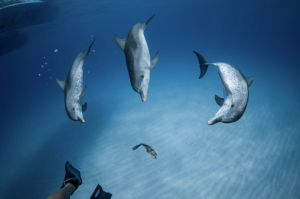
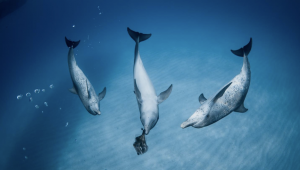
Photo Credit: WDP, Brittini Hill
The dolphins continued their play until the filefish swam under the boat and flattened themselves against the inboard starboard hull. The fish escaped the encounter relatively unharmed. It is always a privilege to observe the dolphins’ natural behaviors and very special to see something so unique. Perhaps Jammin, Zahara, and Lettice will take what they learned from playing with the filefish and apply those lessons to their next foraging excursion.

